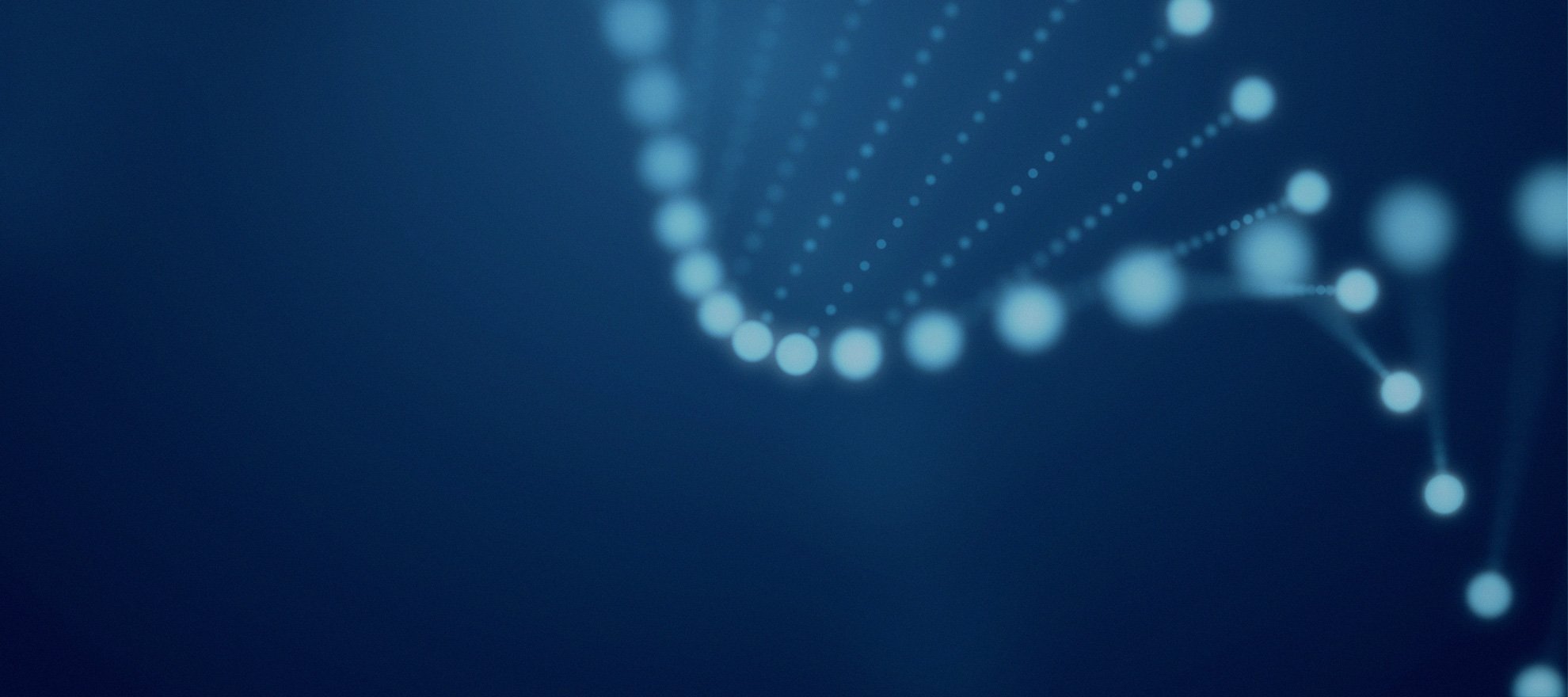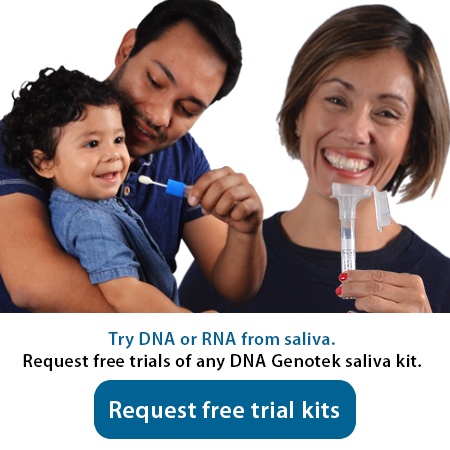2021-09-23
Cancer is a disease that is caused by changes in genes that control the way cells function. There are several cancer types, which can develop due to a combination of factors, including family history, or aspects of lifestyle and/or environment. [1]
It is well-known that early diagnosis of cancer can greatly increase chances of survival. Therefore, finding methods for screening and early detection are key to improving the way the disease is managed and monitored.
Over the years, due to advances in key technologies and the ability to sequence the entire human genome, several biomarkers have been found in tissues as well as body fluids [2], adding a new dimension to the field of cancer research.
Standard methods for cancer screening and detection
Scientists and clinicians alike are constantly working to learn more about the role of genetics in cancer to improve screening and detection. The collection and analysis of DNA from tissue and blood have long been considered the gold standards in oncology studies. [3].
However, there are challenges with these methods. Obtaining tissue samples is not always feasible and the process can be invasive, painful, expensive, time-intensive, as well as clinician dependent. [2] Additionally, blood sampling also has drawbacks as it contains a relatively high and complex protein repertoire, which can interfere with biomarker measurements. The invasive nature of blood tests also prevents repeated measurements and can pose risks to the patient and caregiver. [2]
Further, for some cancer types, standard screening methods follow a one size fits all approach, which might not take into consideration all factors. For instance, a mammography x-ray scan, which examines a woman's breast is the traditional approach for breast cancer screening. However, this method of risk-based screening does not necessarily consider the individual risk of patients. One study suggested that this means women with low risk of breast cancer may be undergoing unnecessary screening tests, while women with a higher risk may be waiting a long time between screenings, which can delay other examinations such as ultrasound and magnetic resonance imaging (MRI). [4]
Non-invasive sample types for cancer screening and detection are gaining interest
Given the challenges with some traditional screening and detection methods, researchers are continuously exploring alternative methods to detect cancer types. The use of minimally invasive procedures such as liquid biopsies and detection of circulating tumor markers in body fluids is gaining interest. Many of these methods are attractive as they are easy to perform, less painful, and often associated with less morbidity [2].
Urine
A lot of work is being done to evaluate urine as an alternative biofluid for urological and systemic cancers. Urine is attractive for many reasons it allows for easy non-invasive and hygienic self-sampling. In addition, urine testing enables cost-efficient rapid and serial sampling. [2]
Several studies have shown the potential of urine as a liquid biopsy due to the ease of sampling and high acceptability compared to blood and tissue. Several biomarkers, including DNA, RNA, metabolites, and proteins for various cancers have been found in urine, including for bladder, kidney and prostate cancer, but also for breast, colon and lung cancer. [2]
However, a standard urine cup has limitations and can be awkward, messy, and inconvenient for the user. Colli-Pee®, a collection device designed by Novosanis, can help overcome these limitations, by offering standardized and volumetric urine collection. Colli-Pee also allows collection of different urine volumes depending on the application and allows for immediate mixing with stabilizing chemistry, ensuring analytes of interest are preserved for laboratory assay.
In particular, Colli-Pee is a user-friendly method to capture first-void/first-catch urine (first volume of urine flow) which is rich in analytes. First-void urine contains biomarkers for several cancer types, improving sample collection for downstream analysis. [5]
Benefits for the patient:
- No need to interrupt urine flow
- Allows hygienic and non-invasive self-sampling
- User-friendly and suited for men and women
Benefits for the lab:
- Standardized first void urine collection
- Volumetric options available (4 mL to 45 mL*) to suit a variety of downstream applications
- Sample stabilization at point of collection (optional)

Related Content: Liquid biopsy: Urine as a sample type
Saliva
Saliva samples, which are painless for the donor and relatively easily collected, are quickly becoming the preferred choice for sample collection of nucleic acids for cancer research and screening. Saliva DNA contains 74% leukocytes making it comparable to blood and suitable for large scale genetic testing and cancer screening.
Studies have found salivary diagnostics for the detection of specific cancer biomarkers to be simple and pain-free for the donor, cost-effective, and accurate. [6] DNA GenotekTM's products are ideal for research or diagnostic applications; Oragene ® and ORAcollect ® product lines offer an all-in-one system for reliable collection, stabilization, and transportation of high-quality DNA and RNA samples.
Benefits for the patient:
- Improved patient care, convenience and compliance
- Option to collect in clinic, at point-of-care, or at home with self-collection kits Ideal for patients of all ages, including children and patients that cannot provide blood samples
Benefits for the lab:
- DNA Genotek’s sample collection products stabilize DNA and RNA at ambient temperature
- Oragene and ORAcollect are compatible with manual, column and magnetic bead-based extraction methods, and are validated to perform on a wide range of molecular assays
- Collection tubes are compatible with high-throughput processing, minimizing sample handling to reduce handling errors and increasing laboratory workflow efficiency
- Lab integration services are available to optimize sample processing and reduce validation time and costs

Related Content: Hunting for Cancer Genes with DNA from Saliva
Potential application areas
Urine as a potential sample type for cervical cancer screening
Cervical cancer can be prevented through vaccination and screening; however, it remains the fourth most common cancer type in women, with over 500,000 cases detected in 2018. [7] Most cases of cervical cancer have been linked to types of high-risk Human Papillomavirus (hrHPV), a common sexually transmitted infection, which can be detected in urine.
Regular cytology-based screening for cervical cancer via a clinician-take cervical smears (Pap smear), has directly shown to improve incidence mortality rates. However, screening up-take greatly varies from region to region. Reasons for poor screening uptake via Pap smears include the relative invasive nature of cervical sampling, ethnicity and culture, lack of time and the need to visit a clinician. Due to these challenges, self-collection techniques have been recommended, which can significantly improve screening coverage and reach those women who do not routinely attend screening programs. [8]
Interestingly, first-void urine contains higher concentrations of HPV than midstream urine. As this fraction of urine contains the most cervicovaginal cells, mucus and debris, it is critical to improved sensitivity. Colli-Pee®, prefilled with Novosanis' proprietary stabilization chemistry, Urine Conservation Medium (UCM) is recommended for HPV testing and several studies are ongoing in the field. First-void HPV urine testing could be game-changing in cervical cancer research, by increasing participation in screening, ultimately, decreasing indices rates. [8]
First-void urine collected with Colli-Pee has shown applications for other cancer types including prostate cancer [2]. Novosanis also has an ongoing research project on biomarker detection in prostate and breast cancer - Urine as a liquid biopsy for cancer detection (URODETECT),
Saliva to help pave the way for genetic breast cancer screening
In a study conducted by Poehls et al, saliva samples were collected using Oragene•DNA from 67 women in Germany to research how genetic testing could be used for breast cancer screening (Germany is reported to have the highest mortality rate for breast cancer in the world since 2013). At first, they tested the quality of the DNA and resulted in a suitable quantity and quality of DNA comparable to other studies. [4]
Additionally, blood and saliva samples from 3 individuals known to carry both the BRAC1 and BRAC2 mutations were compared. BRAC1 and BRAC2 mutations were identified in both saliva and blood in all cases, confirming DNA from saliva as a suitable sample type for the detection of BRAC1 and BRAC2 mutations via high throughput genotyping. [4]
Based on a survey conducted by Poehls et al, the women enrolled in the study accepted the idea of saliva DNA for genetic testing due to its ease and non-invasive nature compared to blood. [4] This is consistent with another study conducted by Adamkova et al., which showed that patients would accept genetic testing for breast cancer research depending on the sample type, where saliva had the highest acceptance rate. [9]
Related Content: Is genetic testing with saliva the best method for risk-based breast cancer screening?
Are non-invasive sample types the future of cancer research screening?
Biomarker testing is on the rise. Integrating the right sampling method is anticipated to continue the drive towards more personalized medicine, and tailor appropriate screening, surveillance, and treatment option for an individual.
If you would like to learn more about urine as a sample type, you can email Novosanis at info@novosanis.com. If you are interested in learning more about saliva collection kits, you can email DNA Genotek at info@dnagenotek.com or click the picture below to request free samples.
References:
[1] https://www.cancer.gov/about-cancer/causes-prevention/genetics
[2] Stephanie Jordaens, Arya Mehta, Quinten Van Avondt, Danielle Pasmans, Koen Beyers, Vanessa Vankerckhoven - Urine as a liquid biopsy - is it the holy grail?
[4] Poehls et al. (2018). Saliva samples as a source of DNA for high throughput genotyping: an acceptable and sufficient means in improvement of risk estimation throughout mammographic diagnostics. Euro J Med Res. 23:20.
[5] https://novosanis.com/our-products
[6] Xiaoqian Wang et al. (2016). Salivary biomarkers in cancer detection. Med Oncol. 34(1):7
[8] Arya Mehta, Michelle Laeremans, Nette Meers, Alejandra Ríos Cortés, Quinten Van Avondt, Danielle Pasmans, Koen Beyers, Vanessa Vankerckhoven - First-void urine as a game-changer for HPV-based cervical cancer screening
[9] Adamkova V et al. (2009). Volunteer’s willingness to genetic testing – lack of the understanding of the matter. Physiol Res. 58(1):S53-4.


